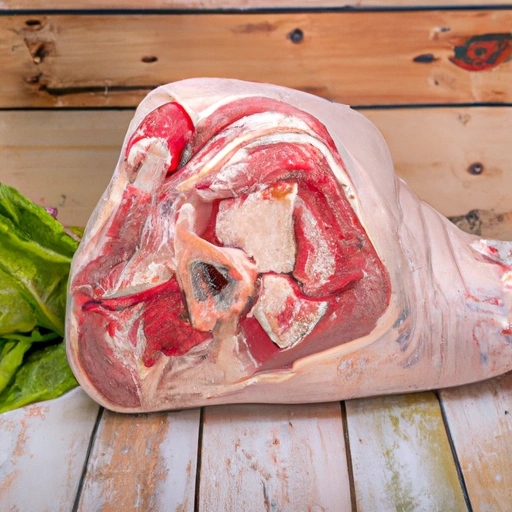Leg of Lamb
Description

Leg of lamb is a succulent and flavorful cut of meat that is obtained from the hindquarters of the sheep. This ingredient is cherished for its tender texture and rich taste, making it a favorite for roasts and special occasions. Available in various sizes, a whole leg of lamb can weigh anywhere from 4 to 9 pounds (1.8 to 4 kilograms) and can be purchased bone-in, boneless, or partially boned, allowing for versatile cooking techniques and portioning. When selecting a leg of lamb, look for a pinkish-red color with a good amount of marbling and a white layer of fat for the best flavor and juiciness.
Common uses
Leg of lamb is most often used as the centerpiece for festive meals, particularly during holiday celebrations. It is also a popular choice for Sunday roasts, barbecue feasts, and gourmet dinners. Its versatility allows it to be served in various forms, from elegant sliced preparations to casual pulled or shredded presentations.
Nutritional value
Calories
A 3-ounce (85 grams) serving of cooked, lean leg of lamb contains approximately 160-200 calories.
Protein
Leg of lamb is an excellent source of protein, with 22-25 grams per 3-ounce (85 grams) serving.
Fat
The same serving size has about 7-10 grams of fat, which includes a mix of saturated and unsaturated fats.
Carbohydrates
Leg of lamb is carb-free, making it suitable for low-carbohydrate diets.
Vitamins
It is a good source of B vitamins, particularly vitamin B12 and niacin.
Minerals
It also provides essential minerals like zinc, selenium, and iron.
Health benefits
Consuming leg of lamb as part of a balanced diet can contribute to muscle growth and repair due to its high protein content. The B vitamins present in lamb help support nerve health and the formation of red blood cells, while the minerals such as iron are crucial for oxygen transport in the blood. Additionally, zinc and selenium play important roles in immune function and antioxidant protection.
Potential risks
While leg of lamb can be part of a healthy diet, it is important to consume it in moderation due to its saturated fat content. Overconsumption of saturated fats can increase the risk of heart disease. It is also advisable to trim excess fat and choose cooking methods that reduce fat content, such as roasting or grilling.
Common recipes
Popular recipes featuring leg of lamb include the classic roast leg of lamb, slow-cooked lamb shanks, lamb gyros, and grilled lamb kebabs. It can also be found in stews, curries, and shepherd's pie.
Cooking methods
Leg of lamb can be roasted, grilled, braised, or slow-cooked. Each method brings out different flavors and textures, from a crispy outer crust with a juicy interior to fall-off-the-bone tenderness.
Pairing with other ingredients
Leg of lamb pairs beautifully with a range of flavors and ingredients such as rosemary, garlic, mint, and a variety of root vegetables. Red wine, particularly a robust Cabernet Sauvignon, complements its rich flavors perfectly.
Summary
Leg of lamb is a rich and versatile ingredient with a storied history and a place on tables around the world. Its high protein content and valuable nutrients make it a beneficial addition to a balanced diet when consumed in moderation. With a variety of cooking methods and recipes to choose from, leg of lamb offers endless culinary possibilities for both home cooks and professional chefs alike.